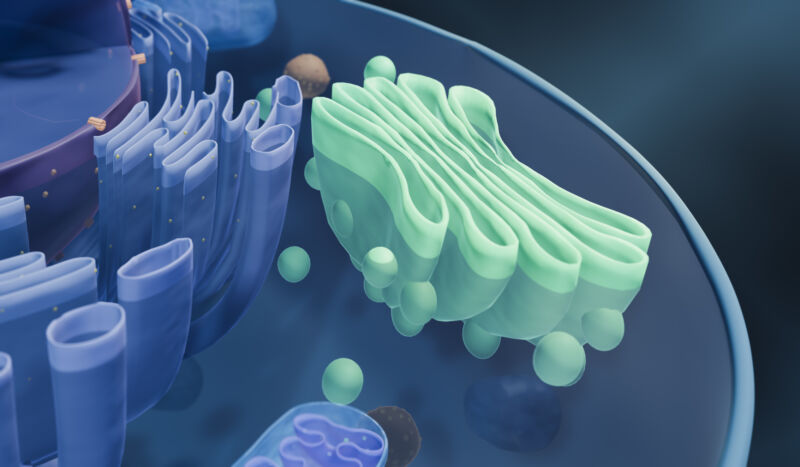Our oldest microbial ancestors were way ahead of their time

Enlarge / The Golgi apparatus, shown here in light green, may have been involved in building internal structures in cells. (credit: ARTUR PLAWGO / SCIENCE PHOTO LIBRARY)
Before Neanderthals and Denisovans, before vaguely humanoid primates, proto-mammals, or fish that crawled out of the ocean to become the first terrestrial animals, our earliest ancestors were microbes.
More complex organisms like ourselves descend from eukaryotes, which have a nuclear membrane around their DNA (as opposed to prokaryotes, which don't). Eukaryotes were thought to have evolved a few billion years ago, during the late Palaeoproterozoic period, and started diversifying by around 800 million years ago. Their diversification was not well understood. Now, a team of researchers led by UC Santa Barbara paleontologist Leigh Ann Riedman discovered eukaryote microfossilsthat are 1.64 billion years old, yet had already diversified and had surprisingly sophisticated features.
High levels of eukaryotic species richness and morphological disparity suggest that although late Palaeoproterozoic [fossils] preserve our oldest record of eukaryotes, the eukaryotic clade has a much deeper history," Riedman and her team said in a study recently published in Papers in Paleontology.